12 Best Product Analytics Tools and Software 2025
PUBLISHED
25 November, 2024

Growth Lead

To be data-driven, you have to select the product analytics tools you use carefully. However, there are so many vendors on the market that it can be easy to lose track of what tools are worth considering.
According to McKinsey, data-driven organizations are 23 times more likely to acquire customers.
They are also six times more likely to retain customers and 19 times more likely to be profitable as a result.
Summary and comparison table
| Tool | Pricing | Best For |
|---|---|---|
| UXCam | Free plan; Paid plans (contact for pricing) | Mobile app analytics, session recordings, heatmaps |
| Mixpanel | Free plan; Paid plans from $24/month | Event analytics, customizable dashboards |
| Pendo | Free plan; Paid plans (contact for pricing) | In-app analytics, user feedback |
| Adobe Analytics | Contact for pricing | Advanced web analytics, segmentation |
| Countly | Free community edition; Paid plans from $80/month | Open-source, privacy-focused analytics |
| Gainsight PX | Contact for pricing | Product analytics, feedback tracking |
| CleverTap | Free trial; Paid plan from $75/month | User engagement, AI-driven personalization |
| Amplitude | Free plan; Paid plan from $49/month | Cross-channel behavioral analytics |
| Heap | Free plan; Paid plans (contact for pricing) | Automatic data capture, data exploration |
| MoEngage | Contact for pricing | Customer engagement, AI automation |
| Unity Analytics | Free plan; Paid plans (contact for pricing) | Game player behavior analytics |
| Smartlook | Free plan; Paid plan from $55/month | Session recordings, event-based analytics |
Best product analytics tools and software list
We’ve done comprehensive research to help you understand what requirements you should look for when comparing product analytics software, and we’ll dive into the list of tools below that we rate as the best ones on the market.
UXCam
Mixpanel
Pendo
Adobe Analytics
Countly
Gainsight PX
CleverTap
Amplitude
Heap
MoEngage
Unity Analytics
Smartlook
UXCam

UXCam is a leading mobile app product analytics tool that is specifically designed for use with mobile apps.
With a rating of 4.7 out of 5 based on 133 reviews, UXCam is a highly-regarded solution in the market. The platform is compatible with all mobile app frameworks, including iOS, Android, React Native, Flutter, Xamarin, Unity, NativeScript, and Cordova.
One of UXCam's standout features is its auto-capture technology, which automatically saves all user gestures within the app as data points that can be analyzed at a later time. This eliminates the need for manual event setup and allows for retroactive data analysis.
Our comprehensive feature-set also delivers:
Session replays and heatmaps to learn natural user behavior, habits, and trends.
Smart Events to create and track specific behaviors without using code or manually setting up tracking.
User journeys to identify common and unusual behavior.
Retention analytics for insights into user loyalty and how effective your strategies are at keeping users engaged over time.
If you have a mobile app and want to improve the user experience and increase conversion rates, UXCam may be a good fit for you. It offers both quantitative and qualitative analytics and can be easily integrated with just two lines of code and in less than 5 minutes.
However, if you are looking for a product analytics tool for web apps, a tool to run A/B tests, or a tool to analyze marketing campaigns, UXCam may not be the best fit for your needs.
Costa Coffee Case Study:
Costa Coffee is the number one coffee brand in the UK. Their mission was to get more users spending by signing up to their newly created loyalty program… but 15% of users were dropping off during the onboarding process.
The team used UXCam to pinpoint the common frustration points along the onboarding process that were causing users to bounce. Once Costa Coffee addressed the usability issues, loyalty signups increased by 15%.
What customers say about UXCam
"Wish I found UXCam sooner"
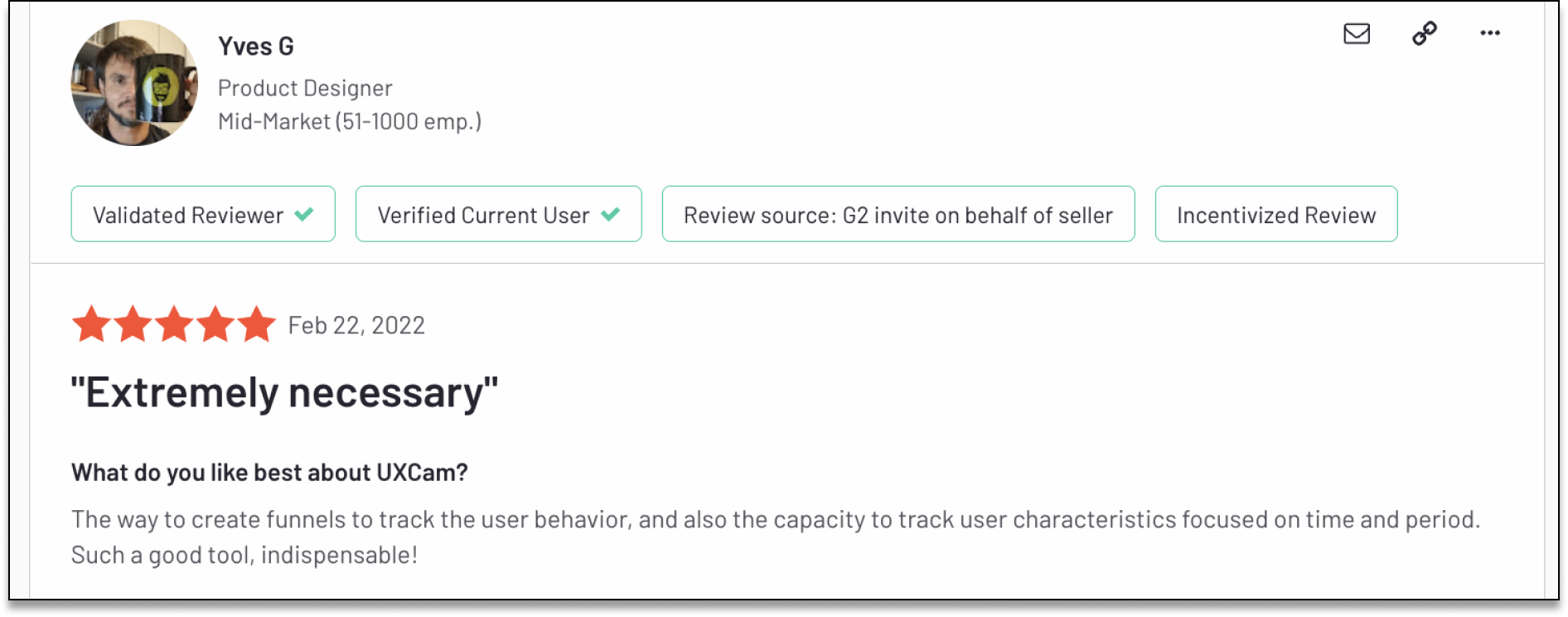
"Such a good tool, indispensable!"
UXCam offers a free plan and a free trial. You can sign up for free here.
Mixpanel
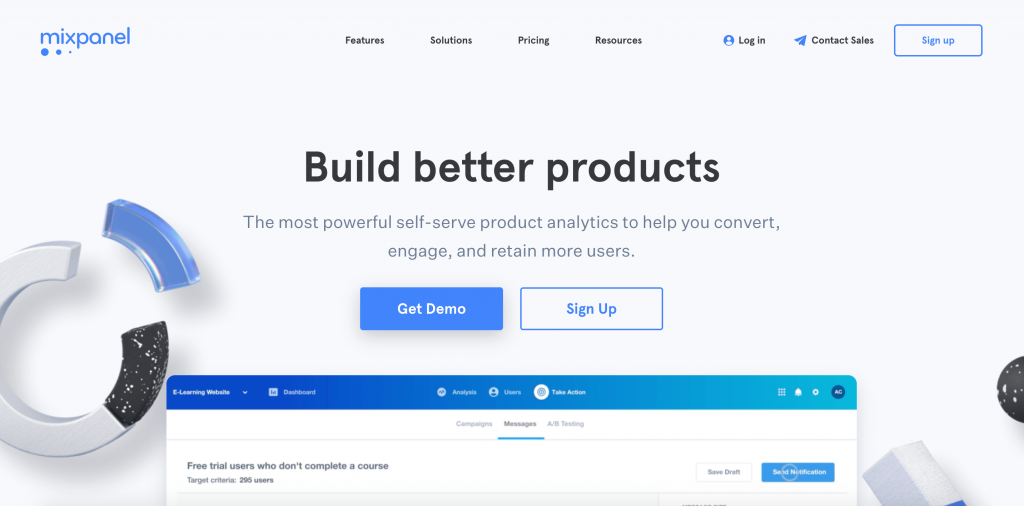
According to customer reviews, Mixpanel has a rating of 4.4 out of 5 based on 84 reviews.
Its pricing starts at $36 per month, though it should be noted that this option includes only limited features and sessions. Some notable features of Mixpanel include its user timeline, predictive analytics, and custom dashboards.

Pros
Can define detailed events
Allows for easy audience segmentation
Fast software
Cons
Time- and resource-intensive setup
Build for web, mobile app tracking lacks behind
Limited date range for user flows
Pendo
Pendo stands out for its focus on in-app analytics, user guidance, and feedback collection. Based on 1,363 reviews, the tool has a 4.4/5 rating.
Features include road mapping, product usage analytics, onboarding, and guide creation. Pendo has a free plan that lets you try functionalities like product analytics and roadmaps for up to 500 monthly active users.
Pros
The product usage data feature supports personal research
Feedback collection through polls and surveys
Great collaboration tool
Cons
Possible learning curve for some teams
Limited offline functionality
Dependent on app updates for advanced features
Adobe Analytics
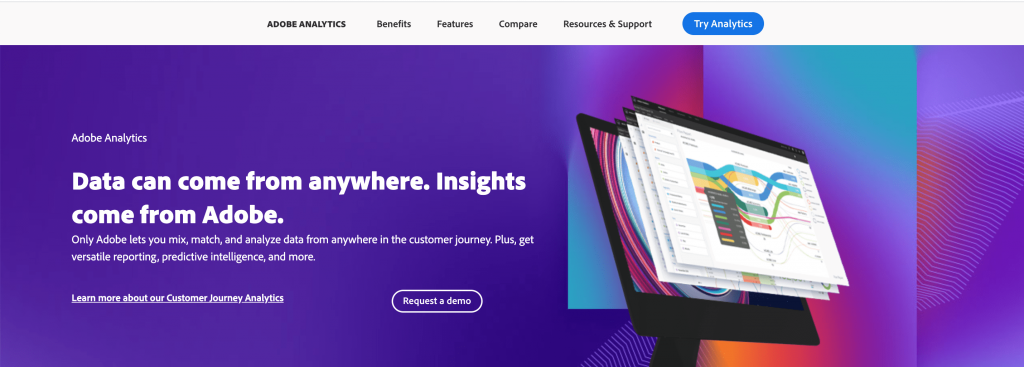
Adobe Analytics is a well-regarded product analytics tool, as evidenced by its 4.4 out of 5 rating based on 167 customer reviews.
While the company does not publicly disclose pricing information, it has been reported that it starts at $100,000. Some notable features of Adobe Analytics include the ability to conduct custom analysis and visualization, an intuitive interface, and powerful segmentation capabilities.
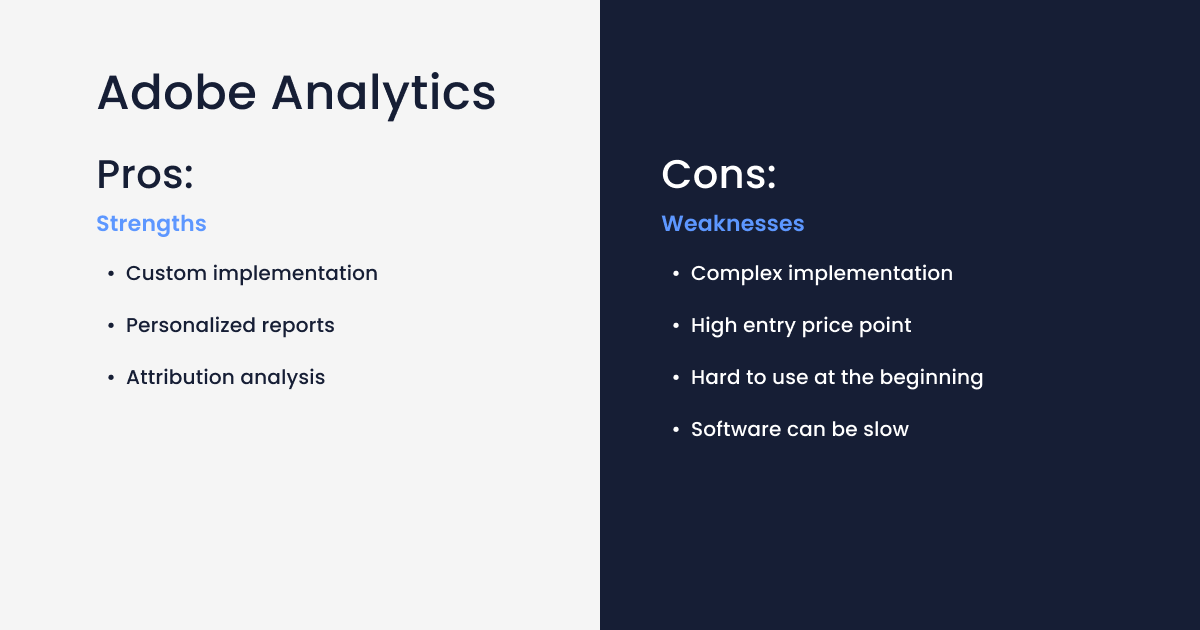
Pros:
Custom implementation
Personalized reports
Attribution analysis
Cons
Complex implementation
High entry price point
Hard to use at the beginning
Software can be slow
Countly
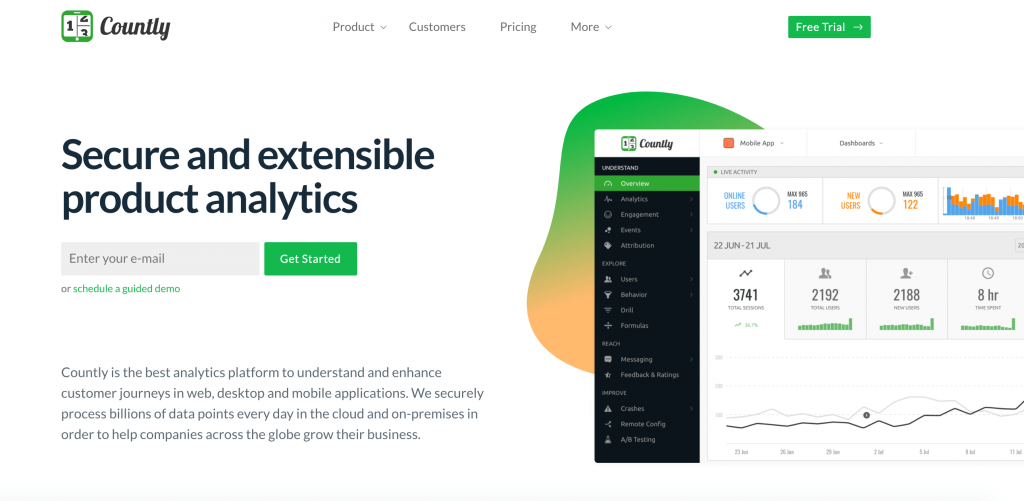
Countly is a top-notch privacy-centric platform that has received a rating of 4.1 out of 5 based on 19 reviews.
One thing that caught our attention about Countly is that it's open source. It , offers the customization and flexibility needed to cater to the specific needs and unique functionalities of mobile apps and provides real-time analytics and features to monitor product performance.
Their paid plans start from just $80 a month.
Pros
Open source for more customized analytics
Comprehensive feature set
Prioritizes user privacy and data security
Cons
Limited integrations
Support and documentation could be improved
Deployment and maintenance may require dedicated resources
Gainsight PX
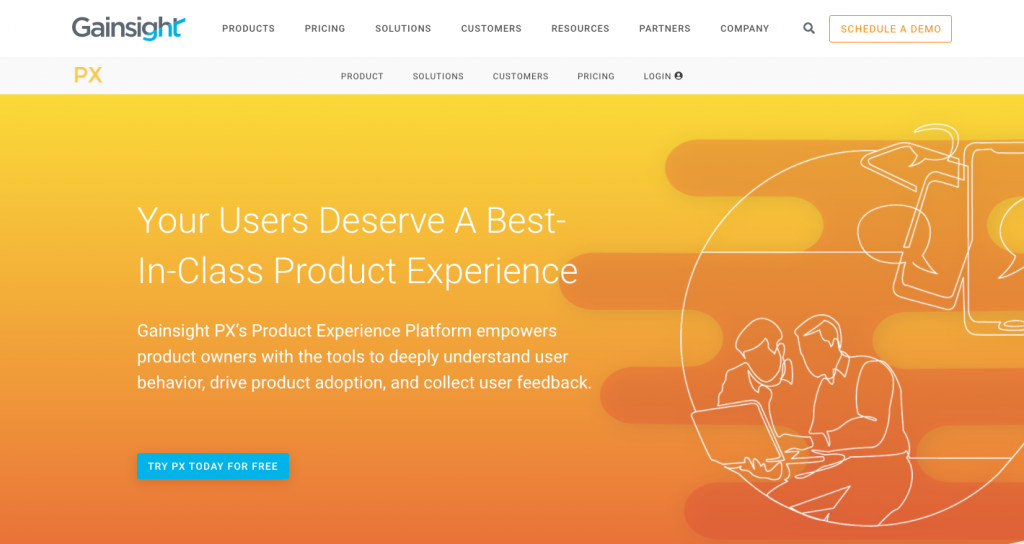
Gainsight PX is a product analytics tool that has received a rating of 4 out of 5 based on a single review.
The company does not disclose pricing information for its tool. Some key features of Gainsight PX include the ability to track user behavior with and without custom events, a product guide, and the ability to gather user feedback.
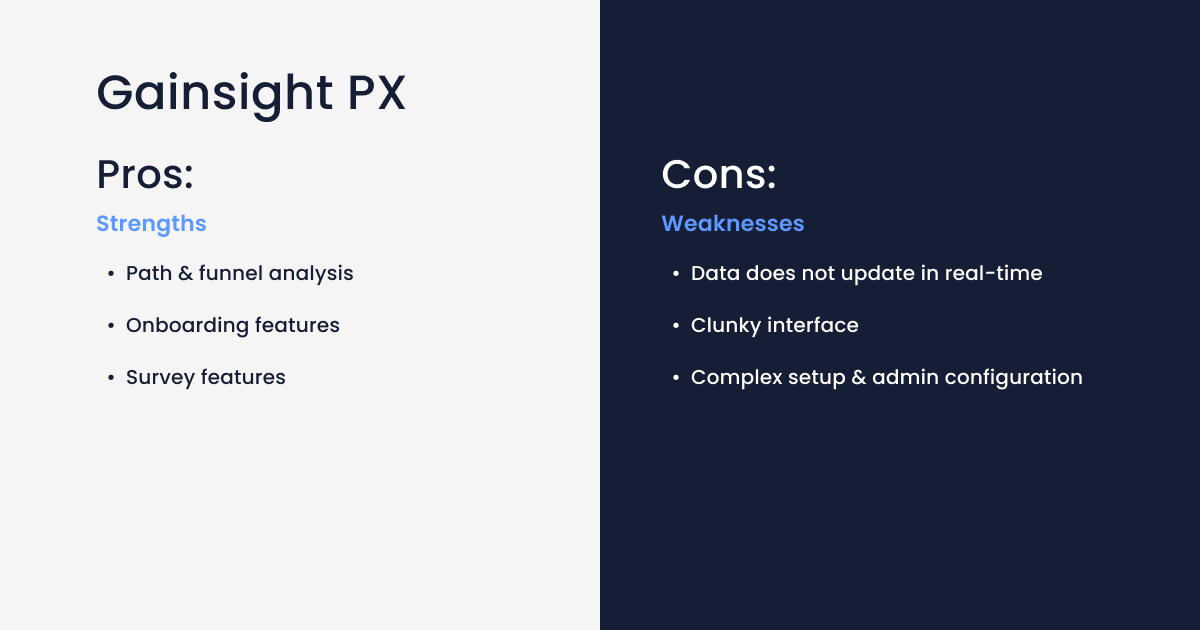
Pros
Path & funnel analysis
Onboarding features
Survey features
Cons
Data does not update in real-time
Clunky interface
Complex setup & admin
CleverTap
CleverTap is a user engagement and retention platform that has received a stellar 4.6 out of 5 rating based on 430 reviews.
With CleverTap, you can track user in-app behavior and gain valuable analytics insights. It offers a range of features including experimentation and optimization, segmentation, and targeted push notifications.
Pros
A great customer support team
Flexibility to include ad-hoc segmentation
Excellent cohort analysis
Cons
Some users find the setup complex
New features take time to deploy
Data storage limitations
Amplitude
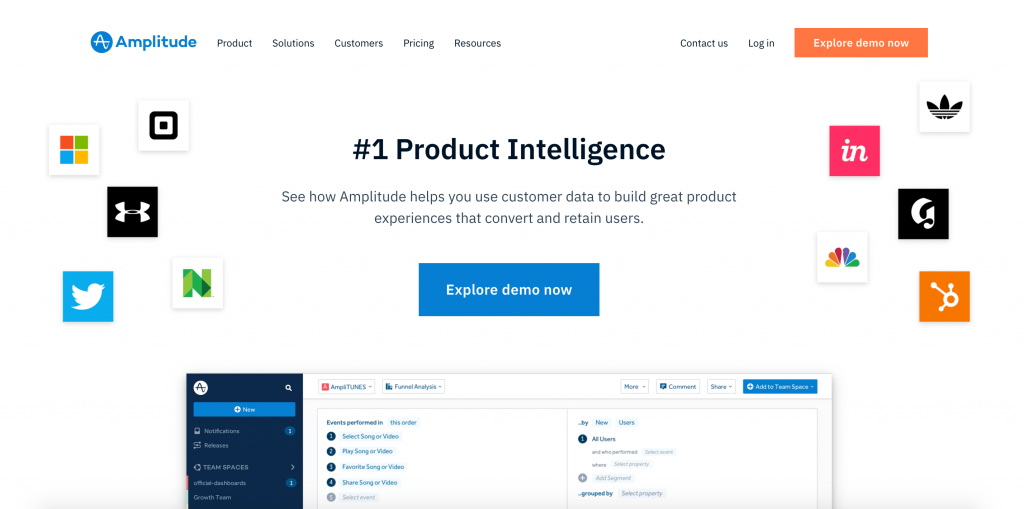
Amplitude is a product analytics tool that has received a rating of 4.4 out of 5 based on 39 reviews.
According to GetApp, Amplitude offers a free plan for up to 10 million monthly events. For more advanced features, the company offers a business plan starting at $995 per month, with enterprise pricing available upon request. Some key features of Amplitude include custom dashboards, user profiles, and a real-time event stream.

According to our research, the following are the best product analytics tools on the market, as evidenced by their average reviews on Capterra and G2. It should be noted that these premium tools often use a custom pricing model that is based on usage volume. Prices for these tools are listed below, though it is worth keeping in mind that they may vary.
Pros
Customizable dashboards
Fast support
Strong cohort & funnel analytics
Cons
No auto-capture
Needs training and support
Time-intensive to define events
Heap

Heap offers powerful data exploration capabilities for in-depth user analysis. With a rating of 4.4 out of 5 stars from 1,072 reviews, Heap is highly regarded.
Some of their standout features include ready-to-use templates for data analysis, user journeys, and data science tools, which help uncover any areas causing friction.
When it comes to plans, Heap offers four options, including a free plan. They even provide free trials for both their standard plans and their new session replay feature.
Pros
Excellent support, education, and community teams
Reasonable price point
Quick and easy to gather insights
Cons
Pricing based on data volume limitations
Complex requirements may require developer involvement to set up
Some real-time reporting limitations
MoEngage
According to G2, MoEngage boasts an impressive 4.5 rating from 408 customer reviews. They provide customer engagement and in-app behavior analytics to over 1,200 global brands, including big names like Samsung and Unilever.
One of the reasons they're so popular is their AI-driven automation features that offer personalized engagement. Plus, they have a team of 800+ experts, including product innovation specialists, ready to help.
Pros
In-house technical implementation team available
Accommodates complex flows involving multiple iterations and conditional splits, etc
Cons
Slightly complicated pricing structure
Occasional performance issue
UI slightly unintuitive
Smartlook
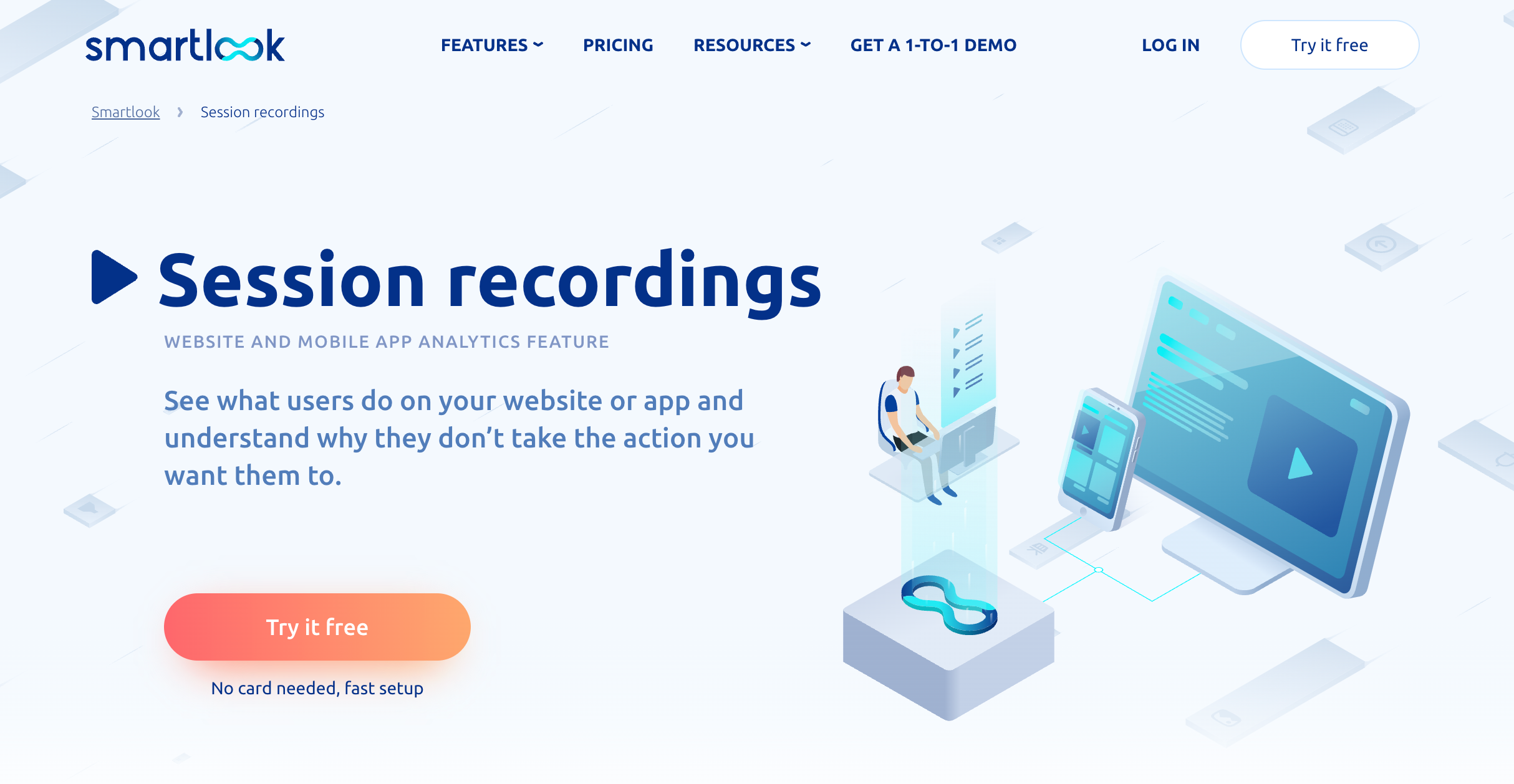
Smartlook is a part of Cisco and is considered a valuable product analytics tool for mobile apps. It has received a 4.6-star rating out of 5 based on 869 reviews.
With Smartlook, you can access a range of useful features like action events, funnels, and crash reports. They offer a free plan with 3,000 monthly sessions and even integrate with Slack. Plus, their pricing starts at just $55 per month.
Pros
Custom events and funnels tracking capabilities
Heatmaps and click tracking
Seamless integration with popular website builders and e-commerce platforms
Cons
Limited filter options
Occasional buggy recordings and funnel reports
User privacy and compliance concerns
Unity Analytics
Unity Analytics is a powerful tool embedded within the Unity game development ecosystem, providing developers with deep insights into their game's performance and player behavior. At its core, Unity Analytics collects, processes, and visualizes data generated by players interacting with the game. This data is crucial for understanding how players engage with various aspects of the game, which can inform decisions on game design, marketing strategies, and feature prioritization.
The platform allows for tracking core metrics such as daily and monthly active users, session lengths, and retention rates. Additionally, it supports more advanced features like custom event tracking, funnel analysis to understand where players drop off, and segmentation to analyze behaviors across different player demographics. Game developers can use this data to run A/B tests, optimize game mechanics, and enhance player engagement. As for pricing, Unity Analytics is available for free to all Unity developers, regardless of the license tier. However, advanced features and higher usage levels may require a subscription or incur additional costs. The pricing model is designed to scale with your project's needs, offering more comprehensive tools and data access as your game grows.
Pros
Seamless integration with Unity projects.
Track and analyze player behavior in real-time.
Tailor the analytics to meet specific needs.
Accessible to developers at no initial cost.
Suitable for both small indie projects and large-scale games.
Cons
Can be overwhelming for beginners or small teams.
While there's a free tier, extensive use or advanced features may be expensive.
Only usable within the Unity ecosystem.
Managing and interpreting vast amounts of data can be challenging.
Reliant only on Unity's infrastructure and updates.
How to choose the right product analytics software
The following features are typical in most tools for product usage analytics:
Detailed user segmentation
Detailed session segmentation
Custom segments and reports
Data funnels
Key KPI dashboards
In addition, the best tools will also support:
Custom event tracking
User behavior tracking
Cohort analysis
Integration capabilities
Retention and churn analysis
Security and privacy compliance
Customer support and training
There are three layers that your product analytics tool needs to cover:
The first layer is the big picture of the product. These are the top-level KPIs and the general user flows.
The second layer covers specific funnels. User flows such as onboarding, conversion, or engagement funnels are highlighted here.
The third layer gets specific about individual user journeys. Understanding user behavior will enable you to improve the UX of your product.
Types of product analytics software
Tools for product analytics come in different forms. Some just offer analytics, while others also provide related toolsets to, for example, capture customer feedback.
There’s also a difference between qualitative and quantitative product analytics tools. Qualitative analytics tools concern themselves with user behavior, whereas quantitative analytics tools focus on numerical data.
The technology used for web and mobile products isn’t the same, which is why it makes sense to have separate tools for each. A one-size-fits-all product analytics tool is likely to lack features or capabilities. You want to get specific and go for specialized tools too.
You can also try building your own product analytics tool in-house. This comes with additional development costs and a certain level of risk. We recommend a cost-benefit analysis here.
How to use a product analytics tool
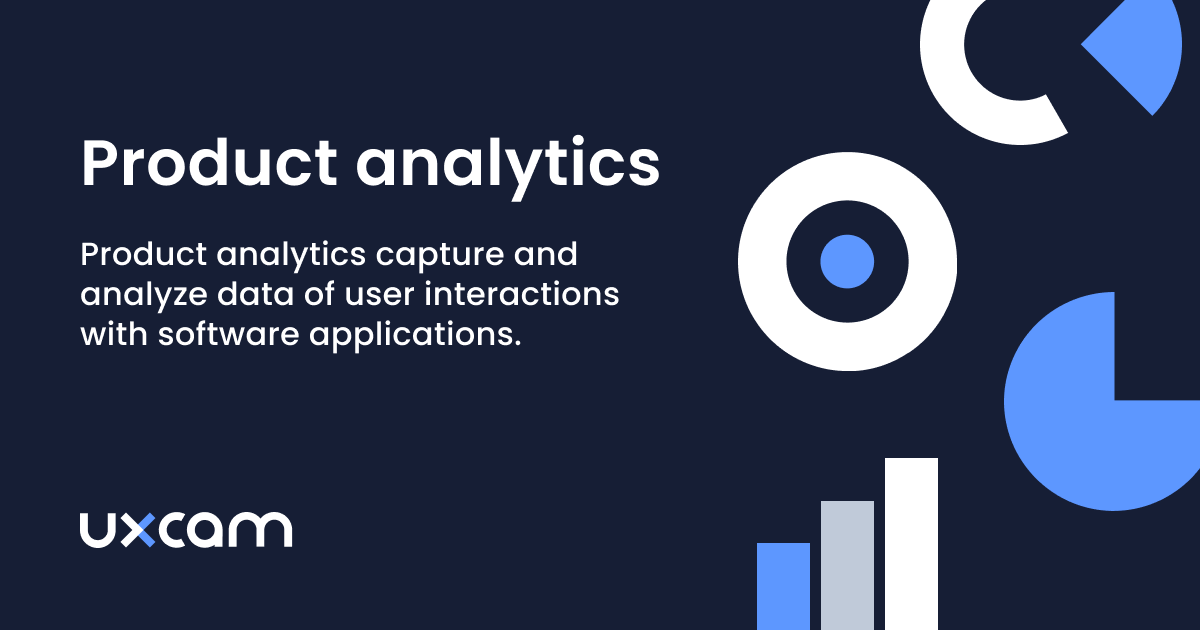
Here's how to use a product analytics tool most effectively:
Connect the tool to your product: Integrate the tool with your mobile app or website, making sure to collect all the necessary data.
Define key metrics: Determine what metrics you want to track, such as user engagement, conversion rates, or customer satisfaction.
Set up tracking and event tracking: Configure the tool to track the metrics and events you have defined.
Analyze data: Log in to the tool and start analyzing the data, looking for trends and patterns in user behavior.
Visualize data: Use graphs, charts, and other visual aids to present the data in a clear and meaningful way.
Identify insights: Look for insights into user behavior and draw conclusions about what drives engagement and conversion.
Share results: Share the results of your analysis with stakeholders, including product and marketing teams, to inform product development and marketing strategies.
Take action: Based on the insights you have gained, make changes to your product or implement new strategies to improve the user experience and drive desired outcomes.
Capturing events and user journeys is the industry-standard capability of a product analytics tool. Whichever tool you choose should provide the relevant insights on the dashboard.
Advanced product analytics solutions automatically capture all the interactions users take without requiring an event setup. Those tools use the additional data depth to generate heatmaps or session replays and allow for retroactive analysis.
Future trends for product analytics tools
Moving forward, product analysis tools will focus more on advanced, automated, and privacy awareness. Here are some of the trends we can expect to see more of in 2024:
AI and machine learning integration: Increased use of AI and machine learning for more data analysis automation and anomaly detection.
Conversational analytics: For user feedback, sentiment, and interaction analysis from conversational interfaces like chatbots.
Privacy-centric analytics: Due to growing concerns about data privacy, tools are expected to focus more on privacy analytics approaches. Vendors who comply with stricter data protection regulations with meaningful insights will be in higher demand.
Cross-platform analytics: Comprehensive analytics across different platforms like mobile, IoT devices, etc., for a unified view of user behavior across multiple touchpoints, will also be in strong demand.
Customization and self-service analytics: More emphasis on self-service capabilities within tools to allow users to create custom reports and queries without heavy reliance on IT support or data experts.
Product analytics tool implementation example
We recommend that you take 5 minutes of your time to watch analytics thought leader Christian Eckhardt explain how to properly set up a product analytics tool:
Conclusion
Effectively implementing a product analytics tool requires comprehensive research and clarity of the objectives you want to achieve. A clear understanding of the requirements and benefits of each one of these tools will help you in your further research.
We hope this guide proves useful in searching for the best solution for you. Ready to give UXCam a try? Start a free 14-day trial now. No credit card required.
FAQs
What is the best product analytics tool for mobile apps?
UXCam is a product analytics tool built exclusively for mobile applications. It supports native mobile apps (iOS and Android), including apps developed using cross-platform tools like PhoneGap, Xamarin, React Native and Flutter.
UXCam was founded in 2012 by a team of user experience (UX), mobile development and data analysis experts to support the need for mobile UX analytics.
What is a Product Analytics Tool?
Product Analytics is the process of gathering quantitative and qualitative data that allow product teams to analyze how users are engaging with a digital product to continuously deliver the best user experience.
Why are Product Analytics Tools Important?
Product Analytics tools enable businesses to see how customers engage with their software. Product analytics track the digital footprint of users to uncover opportunities for improvement.
What are Product Metrics?
Product metrics track the success of a software product. Product metrics examples include retention rate, recurring revenue, or daily active users.
What is a Product Analyst?
Product Analysts analyze data to determine marketing and business strategies for a product.
Related Articles
Top 11 Mobile App Analytics Tools for Product Managers
How to drive app growth with data-driven Product Management
App analysis: Tinder vs. Bumble
13 Best Product Management Tools the best Product Managers use
Product Management Statistics: 20+ Eye-Opening Insights
Best Product Management Resources
5 Fantastic Remote Usability Testing Tools You Can Use Now
How To Do a UX Competitor Analysis for Your Mobile App (FREE Template!)
Mobile App Security: How to Make Sure that Your App Is Safe for Users
AUTHOR

Jonas Kurzweg
Growth Lead
UX, marketing & product nerd. Coffee enthusiast. Working at UXCam.
What’s UXCam?
Related articles
Session Replay
Mobile Session Recording - The Complete Guide 2025
Why session replay is such a valuable feature, and what you should look out for when starting...

Annemarie Bufe
Content Manager
Product Management
14 Best Product Development Software for Every Team 2025
Discover the 14 best product development software tools to streamline collaboration, track progress, collect feedback, and build better products...

Tope Longe
Growth Marketing Manager
Product Management
13 Best Product Management Tools 2025 & When to Use Them
Find out the top tools that the best product managers use daily to perform better at...

Jane Leung
Content Director
